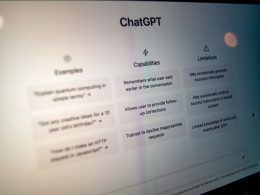The COVID-19 pandemic has brought to light the critical importance of telecommunications in the US education system. With the sudden shift to remote learning, schools and universities have had to rely heavily on internet connectivity, video conferencing tools, and other telecommunications technologies to ensure students continue to receive quality education.
While the pandemic has forced educational institutions to quickly adapt to new technologies, it has also highlighted the challenges and disparities in access to high-speed internet and other telecom infrastructure in rural and low-income areas. In this article, we explore the challenges and opportunities presented by telecommunications in the US education system.
Challenges
The digital divide remains a significant challenge in the US education system. According to a report by the National Center for Education Statistics, approximately 14% of households with school-aged children do not have internet access, and this number rises to 25% in rural areas. This lack of connectivity can have a profound impact on students’ ability to access digital learning resources, participate in online classes, and complete homework.
Furthermore, even in areas with internet access, there are often disparities in connection speeds and bandwidth. This can result in uneven access to educational resources, with some students experiencing lag or buffering while trying to participate in online classes or access course materials.
Opportunities
Despite the challenges, telecommunications also presents significant opportunities to enhance the US education system. For example, video conferencing tools allow for remote learning, which can be particularly beneficial for students who may have difficulty attending in-person classes due to distance or other constraints.
Telecommunications technologies can also facilitate collaboration and communication between students and teachers, regardless of their physical location. This can foster a more inclusive and diverse learning environment, as well as provide new opportunities for remote teaching and learning.
Furthermore, the rise of internet-enabled devices such as smartphones and tablets provides new opportunities for mobile learning. This can allow students to access educational resources from anywhere, at any time, and can be particularly beneficial for those who may not have access to traditional computers or laptops.
Addressing the Challenges
To address the challenges presented by the digital divide and other disparities in telecom infrastructure, several initiatives have been launched to improve connectivity in rural and low-income areas. For example, the Federal Communications Commission’s (FCC) Connect America Fund provides funding for broadband infrastructure deployment in underserved areas.
In addition, many educational institutions are exploring innovative solutions to address connectivity challenges. For example, some schools are deploying mobile hotspots or other Wi-Fi-enabled devices to provide internet access to students in areas with limited connectivity.
Conclusion
Telecommunications technologies present both challenges and opportunities for the US education system. While the digital divide and other disparities in telecom infrastructure remain significant challenges, the pandemic has highlighted the critical importance of connectivity and the potential benefits of remote learning and collaboration.
As educational institutions continue to adapt to new technologies and address connectivity challenges, the role of telecommunications in the US education system will continue to evolve. Ultimately, ensuring access to high-speed internet and other telecom infrastructure is critical for providing equitable and high-quality education for all students, regardless of their location or background.












